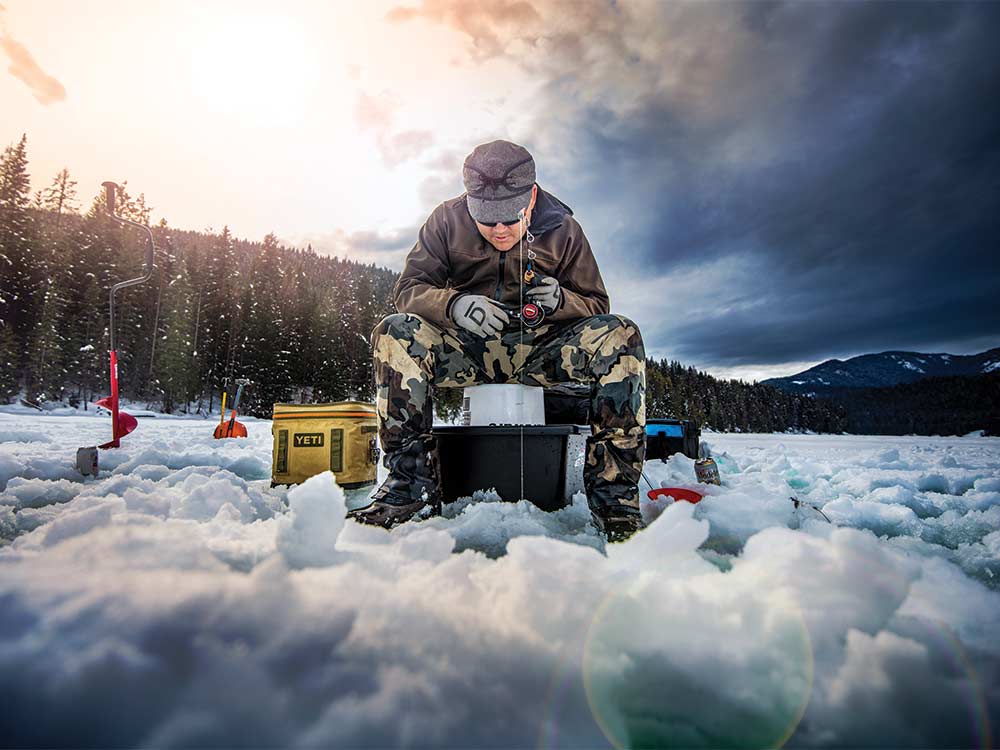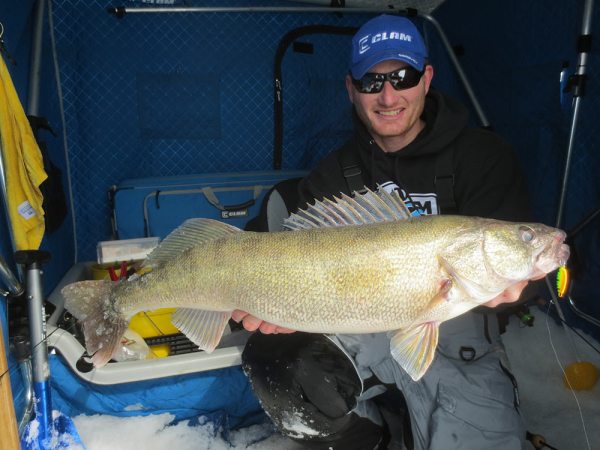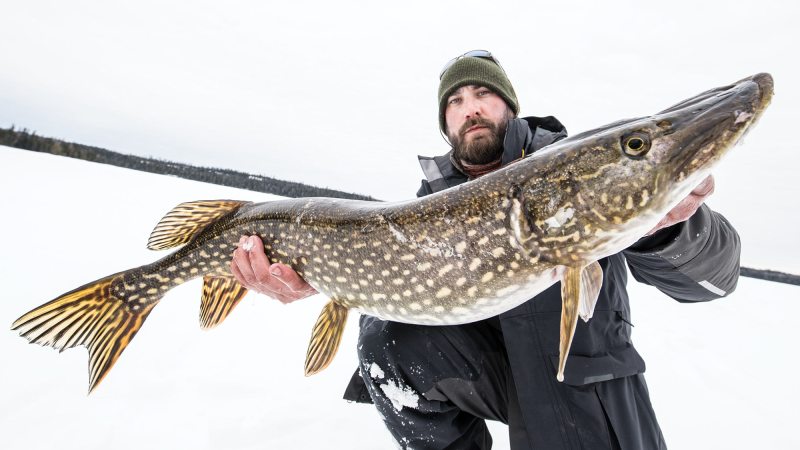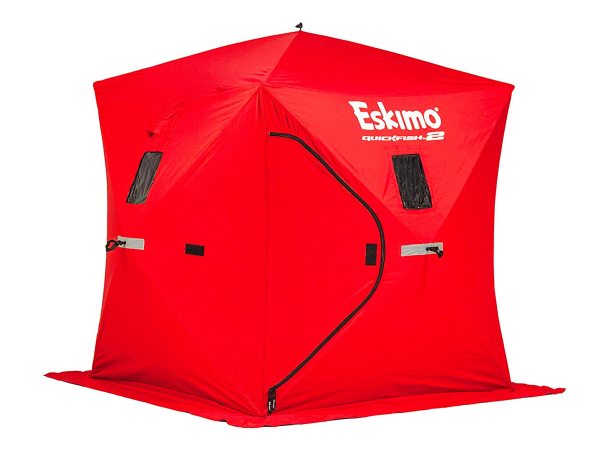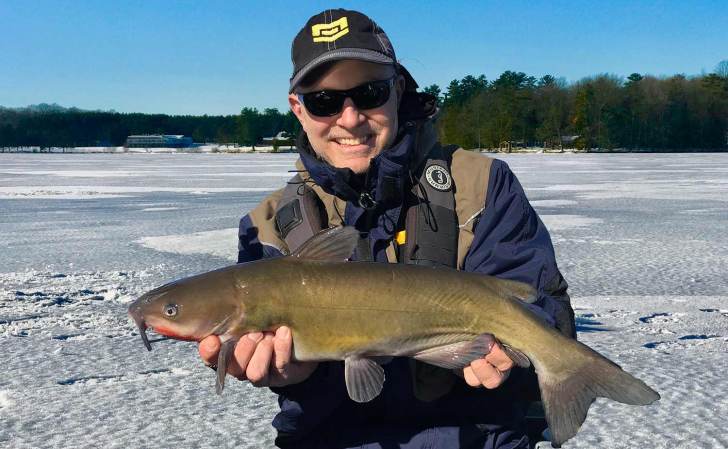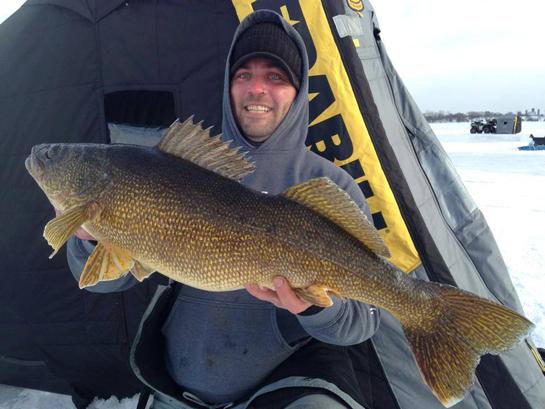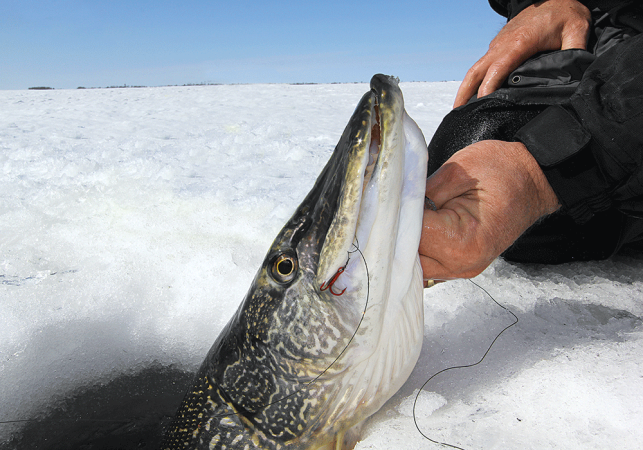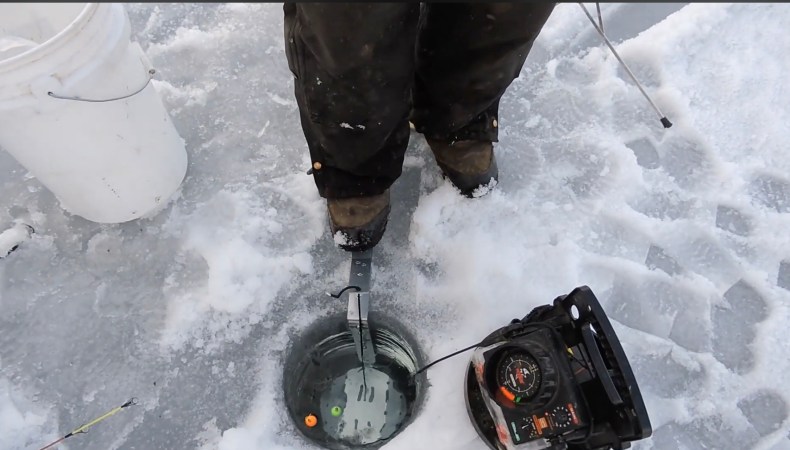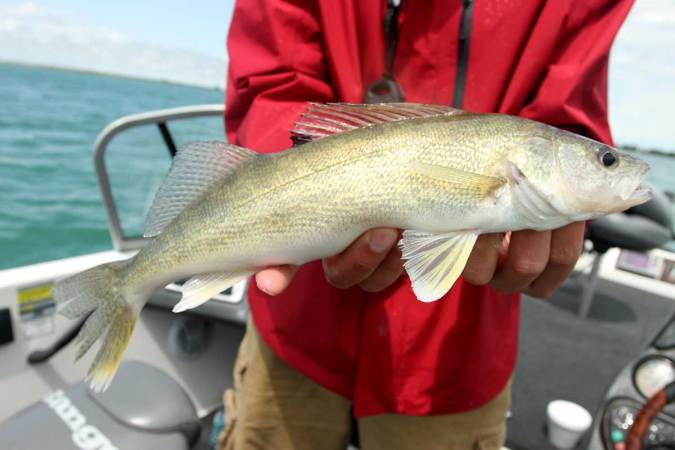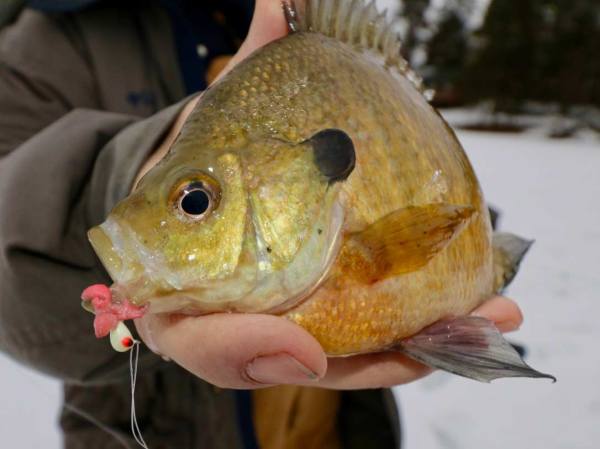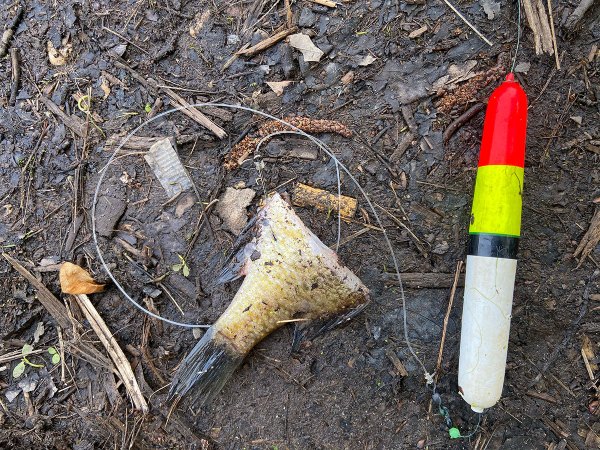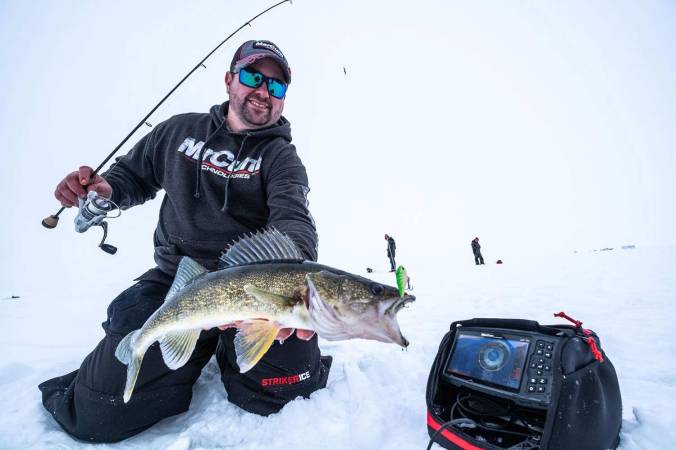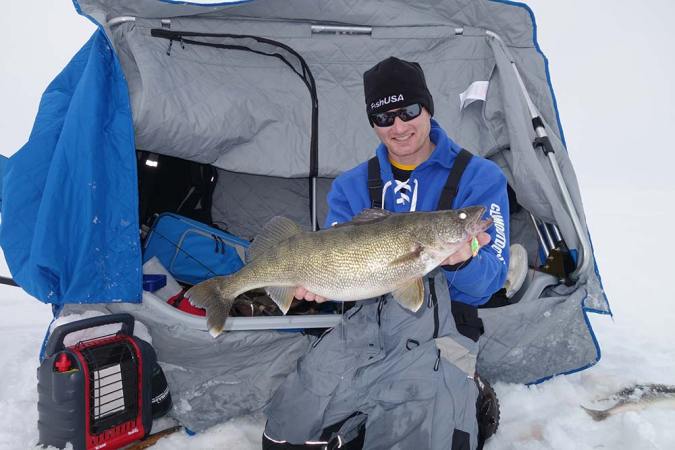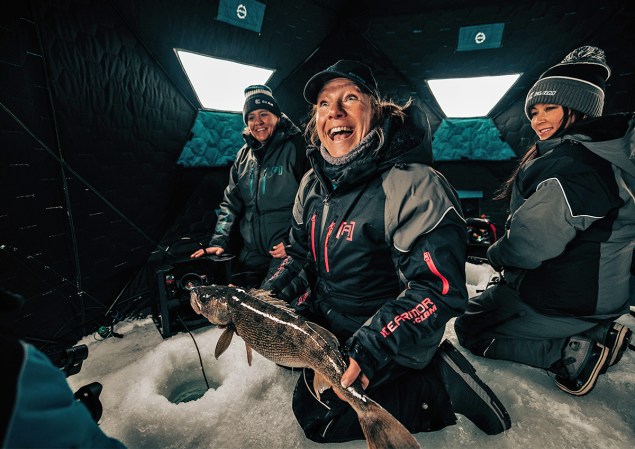We may earn revenue from the products available on this page and participate in affiliate programs. Learn More ›
Ice fishing is work. Just to get a line wet, you’ve got to drill and scoop. Just to keep a line wet, you’ve got to clear ice from the guides. There are a ton of little things that can make a hard-water outing much more challenging than fishing on a sunny summer afternoon, so it should be no surprise that smart ice anglers have come up with a pile of gear hacks to make any day on a frozen lake a little easier, more comfortable, and a lot fishier. You could fill a book with these tricks, but here are four that every serious ice fisherman should know. They all require a few inexpensive items you probably have lying around at home.
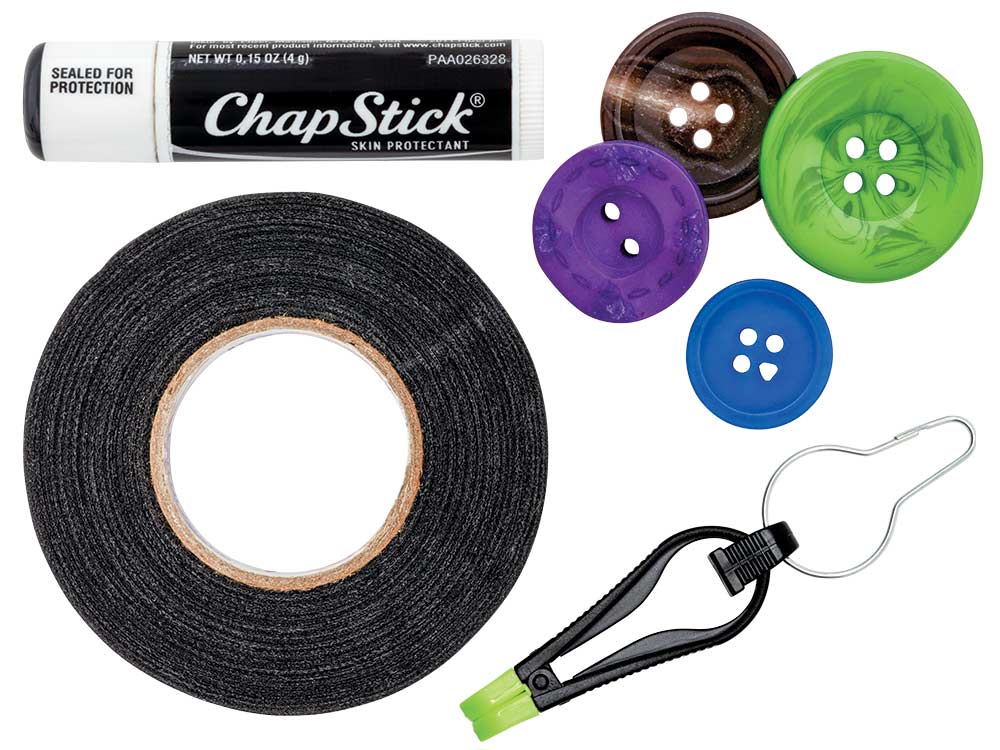
1. Hockey Tape
Hockey tape was made for the ice, and even though hard-water anglers are looking for a different kind of score, they should always have a roll on hand. A few wraps around the butt and foregrip of any jigging rod immediately improves the hold and comfort, but hockey tape can be used on any ice tool. If you’ve ever had the cheap rubber handle cover disappear from your ice scooper, you know the feeling of metal freezing to a glove or the burning sting of touching it with your bare hand. A few wraps of hockey tape can easily fix that. Should your bibs or jacket get hooked or ripped, the hockey tape will keep a tear from getting worse until you can make a permanent repair.
2. Lip Balm
Few things aggravate ice anglers more than frozen rod guides. Chipping away with fingernails, teeth, or anything else lying around can easily damage both the frame and rings of the guides, but you have to keep them clear because iced guides will weaken line, especially super-light monofilament or fluorocarbon. There are a number of homebrew remedies for tackling this problem, but none are more effective than lip balm, which creates a film on guides that inhibits them from freezing and building ice. It’s waterproof and takes quite a while for wet line or precipitation to break it down and necessitate reapplication. A small stick or tin stores easily in your pocket, and just a few swipes with your finger on guide rings will protect them from ice-up for several hours.
3. Planer Board Clip
Big baits catch big fish, but this presents a problem for the ice angler. Hunting behemoth pike and muskies requires large, lively baits that do not play nice with tip-ups. Suckers and live trout are strong enough to trip the flag of almost any tip-up, causing you to waste time resetting lines after false alarms. Attaching a planer board clip to your tip-up to hold your main line will prevent even an 18-inch sucker from triggering a false flag. The added pressure of the clip, which can be adjusted, has enough tension to hold suckers and trout but still allow predators to pull the line free and run. The flag will trip when it matters, but the bait won’t have the strength to trip it by itself. Just snap the clip to the line guide of the tip-up under the spool. This will allow the planer board clip to hang freely under the water. Simply clip in the main line after setting the bait.
Read Next: Yellow Perch Ice-Fishing Tips
4. Buttons
Setting your tip-up baits at the proper depth requires a little work. Then every time you catch a fish or check your bait, you need to reset them. If you’ve got a few nickel-size buttons, those resets become no chore at all. Start by running your main line through one hole in the button and out another. This should allow you to move the button up and down the line easily, but provide enough tension to stop it from sliding on its own. Next, attach your egg sinker, barrel swivel, leader, and hook to the line. Once your depth is set, simply slide the button down to the water’s surface, and then reel the button up to the tip-up’s line guide. Now every time you reset your line after catching a fish or changing bait, wind the spool until the button is at the tip-up guide. Your bait will be set in the same place within the water column every time.
